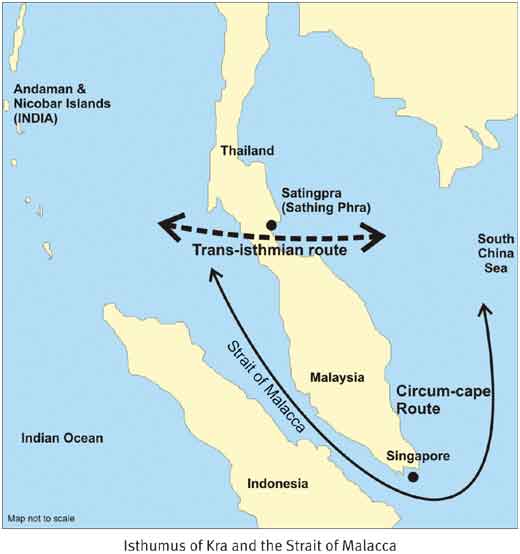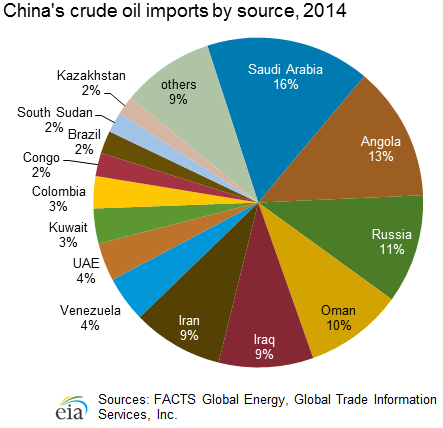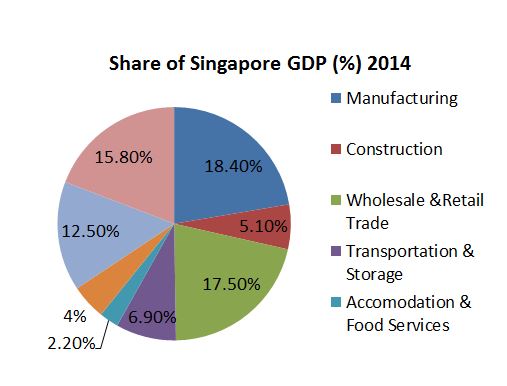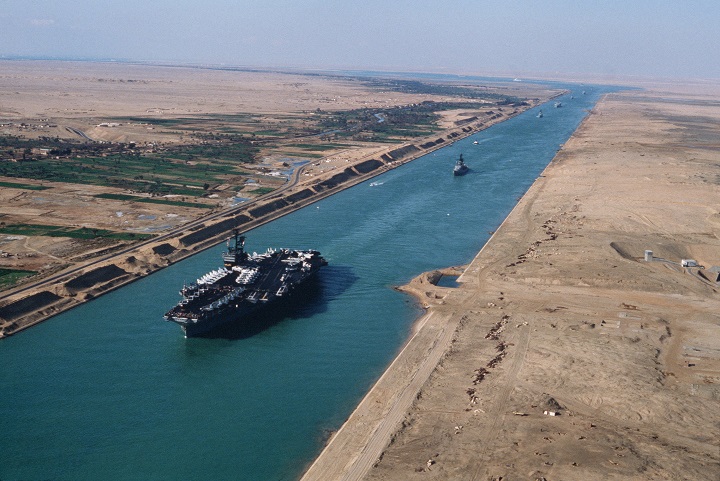For the uninitiated, the canal in question is Thailand's Kra Isthmus Canal, or simply known as the Kra Canal.
Unlike the Suez Canal depicted in the photograph above, the Kra Canal does not exist yet. For centuries (yes, centuries), the Thais have been mulling about the possibility of building a deep-water canal cutting through Thailand’s long peninsula to link the Indian Ocean with the South China Sea.
If the Kra Canal is built, it will cut the journey between the Indian Ocean and South China Sea by up to 1,200 km:
 Source: Picsora
Source: Picsora
MOC between China and Thailand for the construction of Kra Canal signed
Hong Kong news outlet Wen Wei Po reported on 17 May that China and Thailand have signed a Memorandum of Cooperation on the development of the Kra Canal.
If nothing falls through, Kra Canal could be a reality in 10 years at the cost of US$21 billion. If nuclear and other technologies are used in the construction, the timeline could be shortened to 7 years but at a cost of US$36 billion.
*Editor's note: The correct figures are US$21 billion and US$36 billion, it was wrongly stated as US$210 billion and US$360 billion.*
According to the report, the Kra Canal would be 102 km long, 400 m wide and 20 m deep. It would shorten the journey between the Indian Ocean and the Pacific Ocean by 1,200 km. Moving 100,000 tonnes worth of cargo through the canal will shorten the journey two to five days and save approximately US$350,000 in fuel cost.
*Editor's note as at 19 May 3.10pm: Officials from Thailand and China have denied media reports about the Kra Canal. Mothership.sg provides more details here.*
Who benefits from all this?
Shipping and logistics companies would definitely welcome the lowered costs of moving goods between East Asia and Europe. A shorter trip without going through the Straits of Malacca would also reduce the risk of running into pirates.
Thailand would benefit from toll collection, port fees and a range of developments surrounding the canal.
China's involvement in this MOC is noteworthy. For centuries, the idea of building the Kra Canal rested solely on the Thais. In fact, the British signed an agreement with Thailand in the 1800s to prevent the construction of the canal to preserve Singapore's dominance as the region's go-to harbour.
So why has China come to partake in this endeavour?
 Source: US EIA
Source: US EIA
According to the United States Energy Information Administration, China's oil consumption outstrips its own oil production. It relies on importing crude oil to sustain itself. As shown in the diagram above, a bulk of the crude oil comes from the Middle East and Africa.
This oil has to travel through the Straits of Malacca, via Singapore, before it reaches China. Cutting the cost of this oil coming to China would have a positive impact for China.
Additionally with the US Navy having a base in the Philippines and making occasional stops at Singapore, it is a strategic consideration for the Chinese Navy to have a sea route to India which is further away from the disputed waters in the South China Sea. Currently, ships would sail through the South China Sea closer to Borneo, the disputed Spratly Islands and the Philippines. If the Kra Canal opens, ships would take a route closer to Vietnam instead.
With the bulk of maritime traffic being diverted from Singapore, the ports of Shanghai, Hong Kong, Shenzhen all stand to gain too.
Where is Singapore in all of this?
It would be foolish to think that Singapore will not be impacted negatively. It is more a matter of softening the blow than avoiding it.
In the spirit of not putting all its eggs in one basket, Singapore has moved from an economy which depended heavily on its ports for GDP to one which is diversified away from relying on it:
 Statistics from SingStat
Statistics from SingStat
In 2014, Singapore's transportation and storage sector accounted for 6.9% of Singapore's GDP. It moved 581 million tonnes of sea cargo or approximately 34 million containers. This would be directly reduced the day Kra Canal opens for business.
There is one reason ships will still want to make a call at Singapore's ports - it is a safe and secure place to refine the world's black gold. According to some reports, ExxonMobil's refinery in Jurong Island is the seventh largest oil refinery in the world, while Bukom is the largest wholly-owned Shell refinery globally in terms of crude distillation capacity (500,000 barrels per day).
But that could change as well.
With the looming possibility of the Kra Canal being completed within the first half of the 21st century, as well as, the possibility of the opening of the Arctic Northern Sea route with the help of icebreakers, Singapore will find itself in a maritime pinch.
The question is, what will Singapore's next move be?
Articles you may like:
This Russian ship may spell the end of Singapore’s prosperity
A pioneering mindset needed for S’pore to be the global city of the future
Top image from Wikipedia.
If you like what you read, follow us on Facebook and Twitter to get the latest updates.
If you like what you read, follow us on Facebook, Instagram, Twitter and Telegram to get the latest updates.
